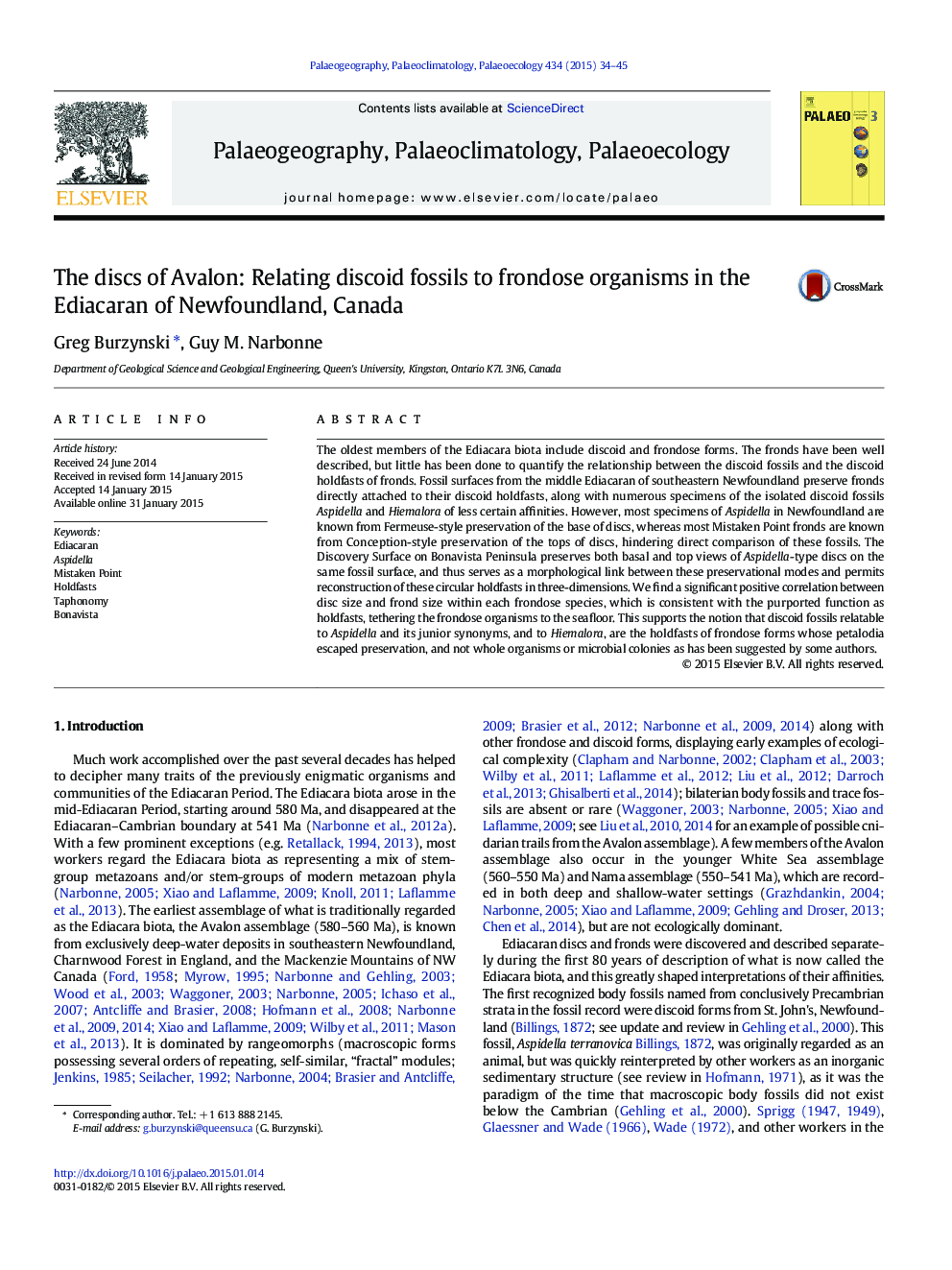| کد مقاله | کد نشریه | سال انتشار | مقاله انگلیسی | نسخه تمام متن |
|---|---|---|---|---|
| 6349736 | 1622156 | 2015 | 12 صفحه PDF | دانلود رایگان |
- Determining the nature of discoid fossils from the Ediacaran Period
- Compared morphology and biometrics of discoid fossils and frond holdfast fossils
- Fossils were on surfaces preserved from below, above, and one where both occur.
- Analyses indicate all discs were different sides of the same holdfast feature.
- These results can be applied to Ediacaran discs worldwide.
The oldest members of the Ediacara biota include discoid and frondose forms. The fronds have been well described, but little has been done to quantify the relationship between the discoid fossils and the discoid holdfasts of fronds. Fossil surfaces from the middle Ediacaran of southeastern Newfoundland preserve fronds directly attached to their discoid holdfasts, along with numerous specimens of the isolated discoid fossils Aspidella and Hiemalora of less certain affinities. However, most specimens of Aspidella in Newfoundland are known from Fermeuse-style preservation of the base of discs, whereas most Mistaken Point fronds are known from Conception-style preservation of the tops of discs, hindering direct comparison of these fossils. The Discovery Surface on Bonavista Peninsula preserves both basal and top views of Aspidella-type discs on the same fossil surface, and thus serves as a morphological link between these preservational modes and permits reconstruction of these circular holdfasts in three-dimensions. We find a significant positive correlation between disc size and frond size within each frondose species, which is consistent with the purported function as holdfasts, tethering the frondose organisms to the seafloor. This supports the notion that discoid fossils relatable to Aspidella and its junior synonyms, and to Hiemalora, are the holdfasts of frondose forms whose petalodia escaped preservation, and not whole organisms or microbial colonies as has been suggested by some authors.
Journal: Palaeogeography, Palaeoclimatology, Palaeoecology - Volume 434, 15 September 2015, Pages 34-45
